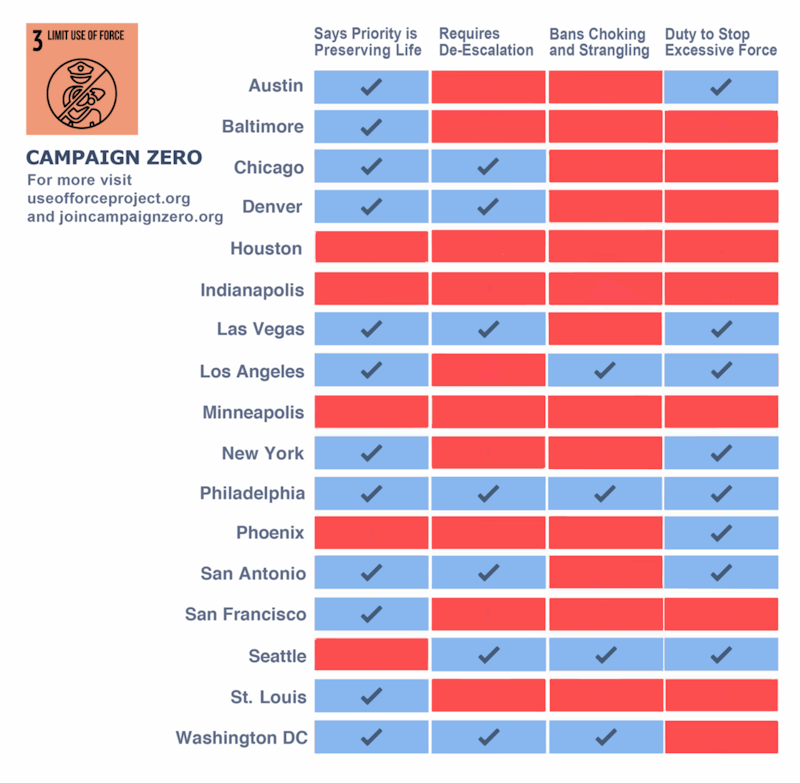On Wednesday, the Campaign Zero criminal justice reform platform released its third policy project, this one examining the restrictions on, and oversight of, police violence across America.
Much of the information summarized in the report was difficult to obtain, given the general lack of transparency that surrounds law enforcement practices. Police departments in Baltimore and New York, the recent sites of charged protests in response to high-profile police killings, do not publish their use of force policies online. Minneapolis, another flashpoint for protests, following the killing of Jamar Clark, is among those cities that do not post data on police shootings. “Many police departments,” write the report’s authors, a group of four activists affiliated with the Black Lives Matter movement, “redact significant portions of their use of force policies before making them public.”
Of those cities analyzed, only four prohibit the use of hogtying, in which a suspect’s hands are cuffed to their feet behind their body. In Chicago, where detective Jason Van Dyck shot 17-year-old Laquan McDonald 16 times almost immediately after exiting his vehicle, police are not required to provide any warning before discharging their weapons.
Check out the infographic below—and the larger, corresponding dataset compiled by Campaign Zero—to see where your city stands in relation to others. Then read the New Republic’s article on how Campaign Zero has drawn attention to another, often overlooked aspect of criminal justice policy: police union contracting.
